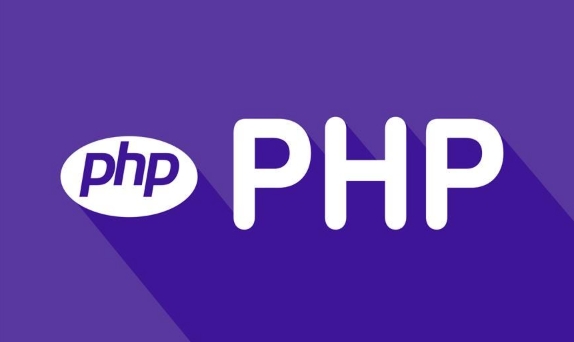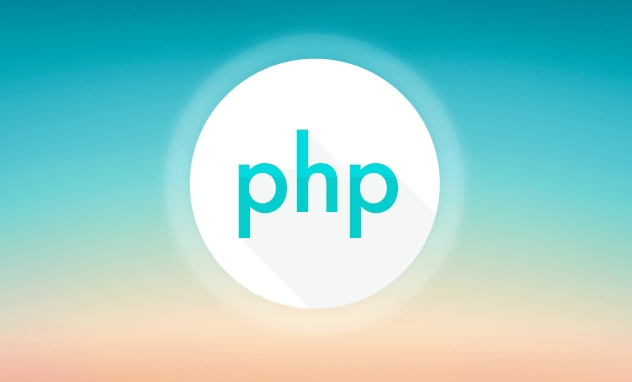Web應用程序的起源:PHP和MySQL的底漆
要開始構建Web應用,首先使用PHP和MySQL搭建本地環境並創建用戶註冊系統。 1. 安裝XAMPP等集成環境,啟動Apache和MySQL服務;2. 在phpMyAdmin中創建數據庫和users表,包含id、username、password等字段;3. 編寫HTML註冊表單,提交數據到register.php;4. 在register.php中使用PDO連接MySQL,通過prepared statement插入數據,並用password_hash加密密碼;5. 處理重複用戶名等錯誤。這樣可掌握服務器請求處理、數據庫交互和數據流控制,為學習現代框架打下基礎。完成後可進一步實現登錄、會話管理和輸入驗證。總之,從PHP和MySQL入手能紮實理解動態網站的核心機制,是通往高級技術的實用起點。

So you want to build a web application — where do you start? If you're diving into the world of dynamic websites, PHP and MySQL are still a solid starting point, even in today's landscape of flashy frameworks and cloud-native tools. They're not the flashiest duo anymore, but they're reliable, widely supported, and perfect for learning the fundamentals of server-side development.

Let's break down how PHP and MySQL work together to bring your web app to life — from handling form data to storing user accounts.
What PHP and MySQL Actually Do
PHP (Hypertext Preprocessor) is a server-side scripting language. When someone visits your website, the server runs PHP code to generate HTML dynamically. That means your pages can change based on user input, time of day, database content, or anything else you program.

MySQL is a relational database management system. It stores structured data — like users, posts, products, or orders — in tables. PHP talks to MySQL to save, retrieve, update, or delete that data.
Together, they form the backbone of countless websites, from blogs to e-commerce platforms.

Think of it like this:
- PHP is the chef in the kitchen, preparing meals based on orders.
- MySQL is the pantry, storing all the ingredients.
- The user sees the finished dish (the web page), never knowing what happened behind the scenes.
Setting Up Your Environment
Before writing code, you need a local development environment. You're not going to start on a live server — that's risky and slow for testing.
Here's how to get started:
- Install XAMPP , WAMP (Windows), MAMP (macOS), or LAMP (Linux). These bundles include Apache (web server), MySQL, and PHP.
- Start the Apache and MySQL services.
- Place your PHP files in the
htdocsfolder (XAMPP) or equivalent. - Visit
http://localhostin your browser to see your site.
Now you've got a sandbox to experiment in — no internet required.
Building a Simple User Registration System
Let's walk through a basic example: a user registration form that saves data to a MySQL database.
1. Create the Database and Table
In phpMyAdmin (a web interface for MySQL that comes with XAMPP/MAMP), run this SQL:
CREATE DATABASE webapp;
USE webapp;
CREATE TABLE users (
id INT AUTO_INCREMENT PRIMARY KEY,
username VARCHAR(50) NOT NULL UNIQUE,
password VARCHAR(255) NOT NULL,
created_at TIMESTAMP DEFAULT CURRENT_TIMESTAMP
);This sets up a place to store usernames and passwords (more on securing passwords in a moment).
2. Build the HTML Form
<form action="register.php" method="POST">
<input type="text" name="username" placeholder="Username" required>
<input type="password" name="password" placeholder="Password" required>
<button type="submit">Register</button>
</form>Simple. Clean. Gets the job done.
3. Handle the Form with PHP
Create register.php :
<?php
$host = 'localhost';
$db = 'webapp';
$user = 'root';
$pass = '';
$charset = 'utf8mb4';
$dsn = "mysql:host=$host;dbname=$db;charset=$charset";
$options = [
PDO::ATTR_ERRMODE => PDO::ERRMODE_EXCEPTION,
PDO::ATTR_DEFAULT_FETCH_MODE => PDO::FETCH_ASSOC,
PDO::ATTR_EMULATE_PREPARES => false,
];
try {
$pdo = new PDO($dsn, $user, $pass, $options);
} catch (\PDOException $e) {
throw new \PDOException($e->getMessage(), (int)$e->getCode());
}
if ($_SERVER['REQUEST_METHOD'] === 'POST') {
$username = $_POST['username'];
$password = password_hash($_POST['password'], PASSWORD_DEFAULT); // Never store plain text!
$stmt = $pdo->prepare("INSERT INTO users (username, password) VALUES (?, ?)");
try {
$stmt->execute([$username, $password]);
echo "User registered successfully!";
} catch (PDOException $e) {
if ($e->getCode() == 23000) { // Duplicate entry
echo "Username already taken.";
} else {
echo "Error: " . $e->getMessage();
}
}
}A few key things here:
- We use PDO (PHP Data Objects) for database interaction — it's secure and flexible.
-
password_hash()securely hashes the password. Never, ever store passwords in plain text. - Prepared statements prevent SQL injection — one of the most common web vulnerabilities.
Why This Still Matters
You might hear that PHP is “outdated” or “not modern.” But WordPress, Laravel, and major platforms still run on it. Learning PHP teaches you:
- How servers process requests
- How to interact with databases
- The flow of data from form to storage to display
And MySQL? It's still one of the most widely used databases in the world. Understanding tables, queries, and relationships gives you a foundation that applies to PostgreSQL, SQLite, and even NoSQL systems.
Next Steps
Once you've got this basic app working, try:
- Adding user login (check username, verify password with
password_verify()) - Starting a session with
session_start()to keep users logged in - Displaying user-specific content
- Validating input (check for minimum password length, sanitize usernames)
None of this is magic — it's just logic, one step at a time.
Building a web app with PHP and MySQL isn't glamorous, but it's practical. You'll learn the core mechanics that power almost every dynamic website. And once you understand those, picking up Laravel, APIs, or even moving to Node.js becomes a lot easier.
Basically, start here. Get comfortable. Then build something real.
以上是Web應用程序的起源:PHP和MySQL的底漆的詳細內容。更多資訊請關注PHP中文網其他相關文章!

熱AI工具

Undress AI Tool
免費脫衣圖片

Undresser.AI Undress
人工智慧驅動的應用程序,用於創建逼真的裸體照片

AI Clothes Remover
用於從照片中去除衣服的線上人工智慧工具。

Clothoff.io
AI脫衣器

Video Face Swap
使用我們完全免費的人工智慧換臉工具,輕鬆在任何影片中換臉!

熱門文章

熱工具

記事本++7.3.1
好用且免費的程式碼編輯器

SublimeText3漢化版
中文版,非常好用

禪工作室 13.0.1
強大的PHP整合開發環境

Dreamweaver CS6
視覺化網頁開發工具

SublimeText3 Mac版
神級程式碼編輯軟體(SublimeText3)
 製作互動網絡體驗:PHP力量的介紹
Jul 26, 2025 am 09:52 AM
製作互動網絡體驗:PHP力量的介紹
Jul 26, 2025 am 09:52 AM
PhPremainsapateFulandAccessiblesErver-SideLanguageForCreatingInterActiveWebexperiencesBecapeitEnablesdynamicContentgeneration,Userauthentication,Andreal-TimeDatahandling; 1)Itiseasytolearnandwidelysporportelysporportelysporported parported parported parported dilectratedDirectlatingDirectlywitlewitlewithhtmlandmlandmlandmlandstingp
 構建您的第一個動態網頁:實用的PHP底漆
Jul 29, 2025 am 04:58 AM
構建您的第一個動態網頁:實用的PHP底漆
Jul 29, 2025 am 04:58 AM
安裝XAMPP/MAMP或使用PHP內置服務器並確保文件保存為.php擴展名;2.在hello.php中用顯示當前時間;3.在greet.php中通過$_GET獲取用戶輸入並用htmlspecialchars()防止XSS;4.使用include'header.php';復用頁面頭部;5.開發時啟用錯誤報告、變量以$開頭、用數組存儲數據、始終過濾用戶輸入。你已創建出能響應用戶輸入、顯示動態內容並複用代碼的動態網頁,這是邁向完整Web應用的關鍵一步,後續可連接數據庫或構建登錄系統,但此時應肯定自己
 超越基礎:使用PHP解鎖Web動力學
Jul 25, 2025 pm 03:01 PM
超越基礎:使用PHP解鎖Web動力學
Jul 25, 2025 pm 03:01 PM
PHPenablesdynamiccontentgenerationbasedonusercontextbyleveragingsessions,geolocation,andtime-basedlogictodeliverpersonalizedexperiencessecurely.2.ItmanagesstateinHTTP’sstatelessenvironmentusing$_SESSIONandcookies,withenhancedsecuritythroughsessionreg
 解碼服務器端:您進入PHP架構的第一步
Jul 27, 2025 am 04:28 AM
解碼服務器端:您進入PHP架構的第一步
Jul 27, 2025 am 04:28 AM
PHP運行在服務器端,用戶請求頁面時,服務器通過PHP引擎執行代碼並返回HTML,確保PHP代碼不被前端看到。 1.請求處理:使用$_GET、$_POST、$_SESSION、$_SERVER獲取數據,始終驗證和過濾輸入以確保安全。 2.邏輯與展示分離:將數據處理與HTML輸出分開,用PHP文件處理邏輯,模板文件負責顯示,提升可維護性。 3.自動加載與文件結構:通過Composer配置PSR-4自動加載,如"App\":"src/",實現類文件自動引入。建議項目
 服務器端腳本錄取:PHP的動手簡介
Jul 27, 2025 am 03:46 AM
服務器端腳本錄取:PHP的動手簡介
Jul 27, 2025 am 03:46 AM
PHPisaserver-sidescriptinglanguageusedtocreatedynamicwebcontent.1.Itrunsontheserver,generatingHTMLbeforesendingittothebrowser,asshownwiththedate()functionoutputtingthecurrentday.2.YoucansetupalocalenvironmentusingXAMPPbyinstallingit,startingApache,pl
 網絡的基石:PHP腳本的基礎指南
Jul 25, 2025 pm 05:09 PM
網絡的基石:PHP腳本的基礎指南
Jul 25, 2025 pm 05:09 PM
phpstilmattersinmodernwebdevelopmentbecapeitpowersover75%ofwebsitessusingserver-sideLanguages,包括Wordpress(43%的Allwebsites),Andremainsessential forbuildingdynamic,database-derivensites.1)
 Web應用程序的起源:PHP和MySQL的底漆
Jul 28, 2025 am 04:38 AM
Web應用程序的起源:PHP和MySQL的底漆
Jul 28, 2025 am 04:38 AM
要開始構建Web應用,首先使用PHP和MySQL搭建本地環境並創建用戶註冊系統。 1.安裝XAMPP等集成環境,啟動Apache和MySQL服務;2.在phpMyAdmin中創建數據庫和users表,包含id、username、password等字段;3.編寫HTML註冊表單,提交數據到register.php;4.在register.php中使用PDO連接MySQL,通過preparedstatement插入數據,並用password_hash加密密碼;5.處理重複用戶名等錯誤。這樣可掌握服務器
 著手現代PHP:語法,服務器和作曲家
Jul 27, 2025 am 03:43 AM
著手現代PHP:語法,服務器和作曲家
Jul 27, 2025 am 03:43 AM
現代PHP開發的核心是語法、服務器和Composer三大支柱。 1.使用現代PHP語法:包括PHP7.4 的類型屬性(如publicstring$name)、PHP8.0 的聯合類型(int|float)、nullsafe操作符(?->)、match表達式和attributes元數據,提升代碼安全與可讀性,並在文件頂部聲明declare(strict_types=1)以啟用嚴格類型。 2.選擇合適的本地開發服務器:摒棄簡單的php-S,改用LaravelSail、SymfonyCLI或Dock







